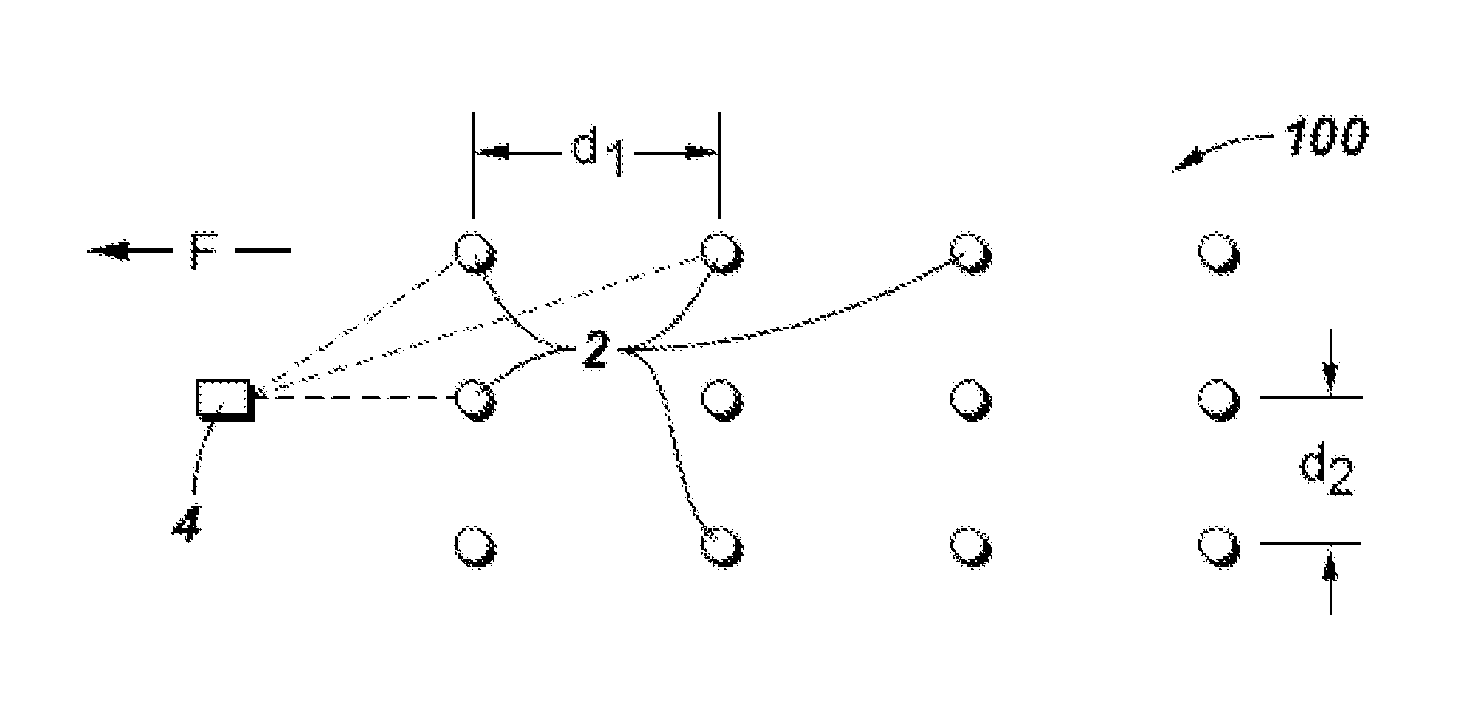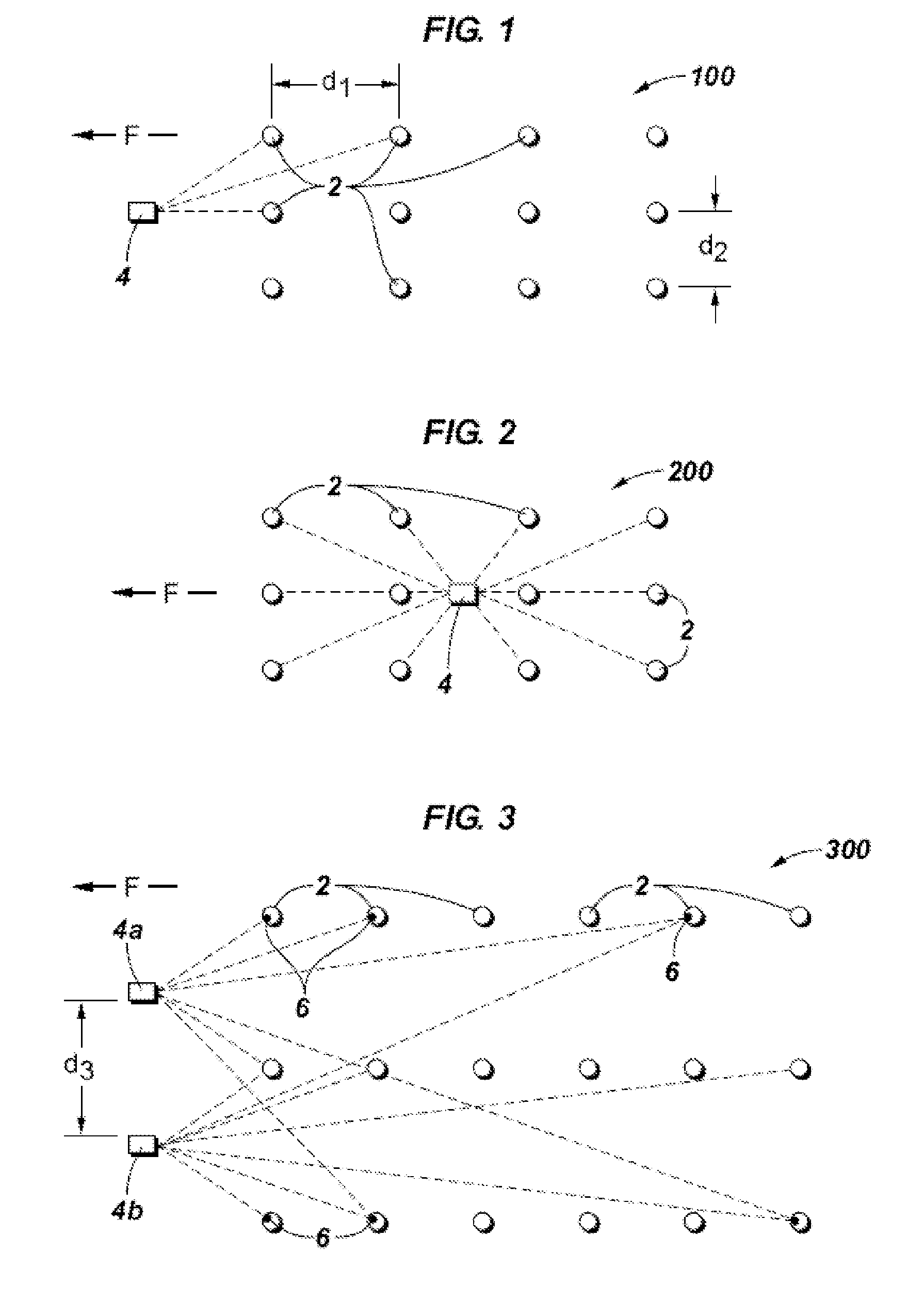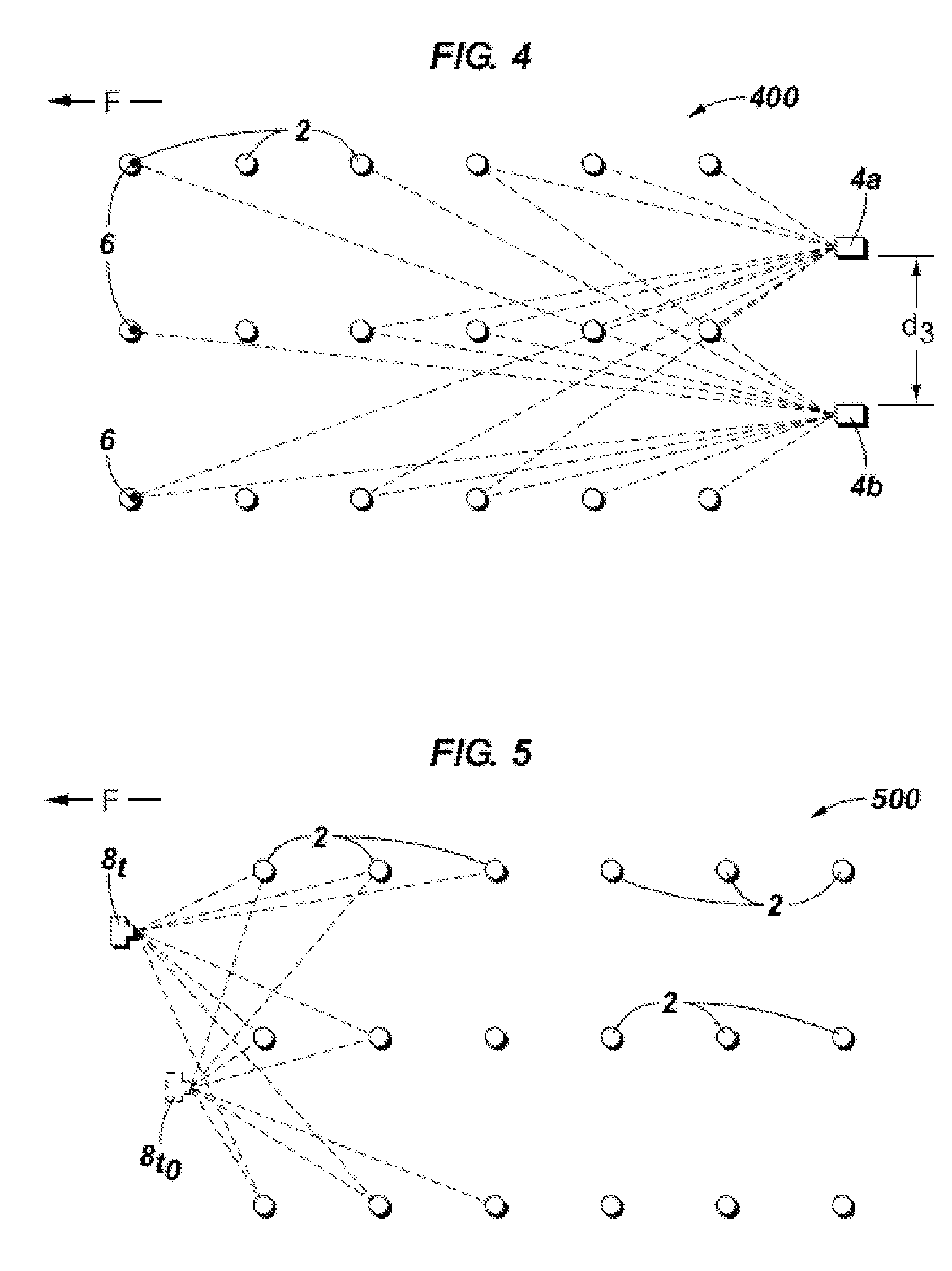Optical methods and systems in marine seismic surveying
a technology of optical methods and systems, applied in seismology, seismology, instruments, etc., can solve the problem of not offering a stable mounting platform, and achieve the effect of reducing or eliminating lens distortion
- Summary
- Abstract
- Description
- Claims
- Application Information
AI Technical Summary
Benefits of technology
Problems solved by technology
Method used
Image
Examples
embodiment 100
[0040] Referring now to the figures, FIGS. 1-8, inclusive, are highly schematic plan view illustrations, not to scale, of eight non-limiting embodiments of the invention. The same reference numerals are used throughout the various figures to point out the same or similar features, and each figure includes a direction arrow “F” indicating the direction of flow or travel of the particular spread component or spread elements illustrated. FIGS. 1-4 illustrate four embodiments of the invention using laser ranging. Arguably, the most accurate way of distance measurement available today using light is the approach used in electronic distance measurement (EDM) devices. This approach depends to some extent on a continuous signal while measuring although some interruptions are tolerated. A common way of measuring distance using a laser is to send pulses and measure the time delay of the reflected signal. In either case it depends on a beam pointing directly on the reflector or the reflective ...
embodiment 200
[0041] The typical embodiment of a marine seismic source may not offer a stable mounting platform where correct pointing direction of an optical device such as laser 4 could be ensured. This problem may be solved using an optical scanner, in some embodiments a laser scanner. One way of making a laser scanner is to supply a rotating mirror or a prism that bends the light ray so that each light pulse is sent in a different angle forming a fan of light pulses. Using a second mirror or prism it is possible to direct the light pulses in a spherical sector large enough to ensure that there is a pulse hitting each spread element 2. Such an embodiment 200 is illustrated schematically in FIG. 2, where laser 4 is converted into a laser scanner by use of such optical techniques. As illustrated in FIG. 2 by dashed lines, laser scanner 4 may scan all source elements 2 and calculate distances indicated by the dashed lines, enabling a more accurate estimate of position of all source elements 2. Op...
embodiment 700
[0054] The quality of the images may be an issue for a successful process. In daylight conditions and clear water it may be possible to take the snapshots without adding any light. If there is sufficient light to obtain good contrast in the images nothing more is needed to complete the data acquisition. The contrast may be improved by applying artificial light in various forms, such as attaching lights 12 to appropriate places on one or more spread elements. Methods of the invention include enhancing contrast in the images using artificial lights to ease identification of the correct marks. The artificial lights could for instance be obtained from an ordinary flash. A better approach may be to position lights in place of the marks on the spread elements. Optional methods include adjusting the intensity to maximise the contrast under the given conditions, and using monochromatic light sources of different color or wavelength to help identify the marks in the images and distinguish th...
PUM
 Login to View More
Login to View More Abstract
Description
Claims
Application Information
 Login to View More
Login to View More - R&D
- Intellectual Property
- Life Sciences
- Materials
- Tech Scout
- Unparalleled Data Quality
- Higher Quality Content
- 60% Fewer Hallucinations
Browse by: Latest US Patents, China's latest patents, Technical Efficacy Thesaurus, Application Domain, Technology Topic, Popular Technical Reports.
© 2025 PatSnap. All rights reserved.Legal|Privacy policy|Modern Slavery Act Transparency Statement|Sitemap|About US| Contact US: help@patsnap.com



